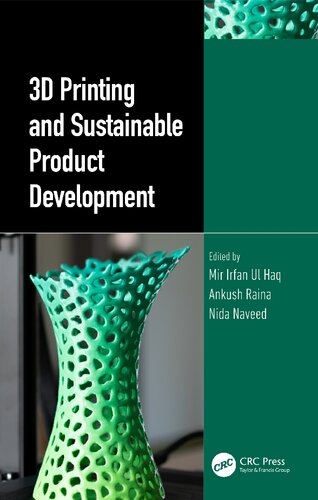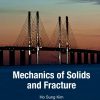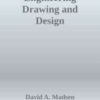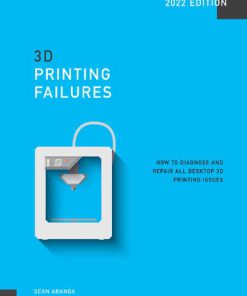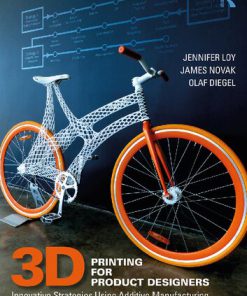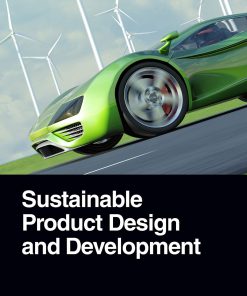3D Printing and Sustainable Product Development 1st Edition by Mir Irfan Ul Haq, Ankush Raina, Nida Naveed ISBN 1000926699 9781000926699
$50.00 Original price was: $50.00.$25.00Current price is: $25.00.
EBOOK_TITLE EBOOk_EDITION by Author1, Author2 – Ebook PDF Instant Download/Delivery: 1000926699, 9781000926699
Full dowload EBOOK_TITLE EBOOk_EDITION after payment
Product details:
ISBN 10: 1000926699
ISBN 13: 9781000926699
Author: Mir Irfan Ul Haq; Ankush Raina; Nida Naveed
The text focuses on the role and the importance of 3D printing in new product development processes. It covers various aspects such as the 3D printing revolution and Industry 4.0, sustainability and 3D printing, and economics of 3D printing. It discusses important concepts, including 3D printing, rapid prototyping, mechanical and physical properties of 3D printed parts, nanomaterials, and material aspects of 3D printing. Features 1. Presents recent advances such as Industry 4.0, 4D printing, 3D material mechanical characterization, and printing of advanced materials. 2. Highlights the interdisciplinary aspects of 3D printing, particularly in biomedical, and aerospace engineering. 3. Discusses mechanical and physical properties of 3D printed parts, material aspects, and process parameters. 4. Showcases topics such as rapid prototyping, medical equipment design, and biomimetics related to the role of 3D printing in new product development. 5.Covers applications of 3D printing in diverse areas, including automotive, aerospace engineering, medical, and marine industry. It will serve as an ideal reference text for senior undergraduate, graduate students, and researchers in diverse engineering domains, including manufacturing, mechanical, aerospace, automotive, and industrial.
3D Printing and Sustainable Product Development 1st Edition by Mir Irfan Ul Haq, Ankush Raina, Nida Naveed Table of contents:
3D Printing and New Product Development: Opportunities and Challenges
1.1 Introduction to Additive Manufacturing
1.1.1 History of Additive Manufacturing
1.1.2 Working of an Additive Manufacturing Process
1.2 Various 3D Printing Technologies
1.2.1 VAT Photopolymerization
1.2.2 Powder Bed Fusion
1.2.3 Binder Jetting
1.2.4 Material Extrusion
1.2.5 Sheet Lamination
1.2.6 Direct Energy Deposition
1.2.7 Material Jetting
1.3 Material Aspects of 3D Printing
1.3.1 New Product Development and 3D Printing
1.3.2 Opportunities, Challenges, and Application Areas
References
How 3D Printing Achieves Sustainability
2.1 Introduction
2.2 Recycling
2.3 Product Applications
2.4 Advantages of 3D Printing
2.5 Challenges of 3D Printing or Additive Manufacturing (AM)
2.6 3D Printing for Humanism
2.7 Transportation
2.8 Localization
2.9 Supply Chain
2.10 Rural Development and Transportation Mitigation
2.11 Strategic Planning
2.12 Standards
2.13 Conclusion
References
Applications of 3D Printing in Product Safety
3.1 Developing 3D Printing Alert System in Conceptual Design
3.1.1 3D Printing Model in Conceptual Design of New Product Development Cycle
3.1.2 Design Alert System in Conceptual Design
3.2 Standardizing 3D Printed Production Tools
3.2.1 Common Types of Test Jigs and Fixtures in the Manufacturing Industry
3.2.2 How 3D Printed Test Fixtures Provide the Best Replacement for Traditional Test Fixtures?
3.3 Centralizing 3D Testing in the Testing, Inspection, and Certification (TIC) Industry
3.3.1 Existing Practice of Testing Machines, Tools, and Fixtures in the TIC Industry
3.3.2 Centralizing 3D Printing Files in the TIC Industry
3.4 Online 3D Printing Hub
3.5 Advantages of 3D Printing
3.6 Disadvantages of 3D Printing
3.7 Summary
References
Environmental Impact of Metal Additive Manufacturing
4.1 Introduction
4.2 Metal Additive Manufacturing Technologies
4.3 Energy Consumption and CO2 Emissions
4.4 Data Collection Methodology
4.5 SEC Comparison Between MAM and TM
4.5.1 SEC Comparison Based on Material Type
4.5.2 Limitations of SEC for MAM Printing
4.6 The Role of Smart Manufacturing for Sustainable MAM
4.7 Sustainable Benefits of MAM
4.8 Conclusion
References
Identification and Overcoming Key Challenges in the 3D Printing Revolution
5.1 Introduction
5.2 Current and Future Challenges in 3D Printing Adoption
5.3 Current Opportunities Enabled by 3D Printing
5.3.1 Utilization of the Computerized Process Chain
5.3.2 Novel 3D Printable Materials
5.3.3 Flexible, Qualified Supply Chain Networks
5.4 Adoption Strategies and Best Practices for 3D Printing
5.4.1 Iterate the Process
5.4.2 Pull Instead of Push
5.4.3 Complement Each Other’s Efforts
5.4.4 Strategize and Support
5.5 Key Enabler and Solution Approach
5.5.1 Cost Savings in Manufacturing and the Process Chain
5.5.2 Production Qualification and Quality Confirmation
5.5.3 Consolidation of Digital Process Chain and 3D Printing into Manufacturing
5.5.4 Establishment of Additional Standards and Guidelines
5.5.5 New Application Development
5.5.6 Expertise Development
5.6 Key Enablers Necessitate Specific Actions
5.6.1 Substantial Diminished Costs Throughout the Process Chain via Common Investments
5.6.2 Putting Resources into Training, Sharing Information, and Assigning “AM-Business Visionaries”
5.6.3 Consolidation and Push Efforts in Standardization
5.6.4 Boosted and Streamlined Financing to Keep Technology Readiness Research Going
5.6.5 Implement Subsequent Sustainability and Circular Economy
5.6.6 Bring Issues to Light and Investor Quality Confirmation and Improved Capabilities
5.6.7 Large-Scale Digitalization of the Interaction Chain
5.7 Conclusion
References
Fabrication of Light Metal Alloys by Additive Manufacturing
6.1 Introduction
6.2 Laser Powder Bed Fusion Additive Manufacturing
6.3 Laser Powder Bed Fusion Additive Manufacturing of Titanium Alloys
6.4 Laser Powder Bed Fusion Additive Manufacturing of Aluminum Alloys
References
Spent Coffee Ground-Based Polymeric Materials for 3D Printing
7.1 Introduction
7.2 Current Applications of Spent Coffee Grounds
7.2.1 Fertilizers
7.2.2 Biofuels
7.2.3 Biodiesels
7.2.4 Bricks
7.3 Comparison of Different Treatments (Oil Removal Process)
7.3.1 N-Hexane Extraction
7.3.2 Ultrasonic Extraction
7.4 Mixing Spent Coffee Grounds with Recycled Polymers
7.5 Benefits of SCG Polymers
7.6 Applications of SCG Polymers
7.6.1 Injection Moulding
7.6.2 Compression Moulding
7.6.3 3D Printing
7.7 Conclusion
Acknowledgments
References
Recycling Polyethylene Terephthalate to Make 3D Printing Filaments
8.1 Introduction
8.2 Global Consumption Rates of PET Polymers in the Past 10 Years
8.3 Current Applications of PET Polymers
8.3.1 Disposable Drinking Bottles
8.4 Ways to Handle PET Wastes
8.4.1 Disposal
8.4.2 Recycling Methods and Applications of Recycled PET
8.4.2.1 Mechanical Recycling
8.4.2.2 Converting to Bottle Flakes Directly
8.4.2.3 Chemical Recycling
8.5 Applications of Recycled PET
8.6 Improvement of Hygiene Problems Before Recycling PET Materials
8.7 Chemical Structures and Properties of Different PET Polymers
8.8 Feasibility of Recycled PET Waste to Make PET-Based 3D Printing Filaments
8.9 Converting PET Plastic Bottles into Filaments for 3D Printing
8.10 Mechanical Properties Change After Recycling
8.11 Conclusion
Acknowledgments
References
Additive Manufacturing Requirements for Dental Implementation
9.1 Introduction
9.2 Need for Digital Manufacturing and 3D Printing in Dentistry
9.3 Current State of Dental 3D Printing
9.4 Techniques of Additive Manufacturing in Dentistry
9.4.1 Stereolithography
9.4.2 Digital Light Processing
9.4.3 Selective Laser Sintering
9.4.4 Selective Laser Melting
9.4.5 Fused Deposition Modelling
9.4.6 Electron Beam Melting
9.4.7 Laminated Object Manufacturing
9.4.8 3D Inkjet Bioprinting
9.5 Applications of 3D Printing in Dentistry
9.5.1 Prosthodontics
9.5.2 Crowns and Bridges
9.5.3 Dentures
9.5.4 Endodontics
9.5.5 Oral and Maxillofacial Surgery
9.5.6 Dental Implants
9.6 Current Issues and Future Prospects
9.7 Conclusion
References
Dental Brace Development Using Digital Light Processing 3D Printing
10.1 Introduction
10.2 Literature Review
10.2.1 The History of Orthodontic Aligners
10.2.2 Additive Manufacturing Technologies
10.2.3 Additive Manufacturing Process
10.2.4 Thermoforming Process
10.2.5 Pros and Cons of Digital Light Processing
10.2.6 Finishing of Plastic Aligners
10.3 Methodology
10.3.1 Fourier-Transform Infrared Spectroscopy
10.3.2 Hardness Test
10.3.3 Dimension and Profile Measurement
10.4 Results
10.4.1 FTIR
10.4.2 Thermoforming
10.4.3 Hardness Measurement
10.4.4 Dimensional Analysis
10.5 Discussion
People also search for 3D Printing and Sustainable Product Development 1st Edition by Mir Irfan Ul Haq, Ankush Raina, Nida Naveed:
3d printing sustainable materials
3d printing sustainable fashion
sustainable 3d printing materials
3d printing environmental sustainability
Tags:
Mir Irfan Ul Haq,Ankush Raina,Nida Naveed,3D Printing,Sustainable Product Development
You may also like…
Technique - Industrial Equipment and Technology
Uncategorized
Engineering - Engineering Technology
Politics & Philosophy - General & Miscellaneous Philosophy
An Analysis of Mahbub ul Haq s Reflections on Human Development 1st Edition Riley Quinn
Biology and other natural sciences - Plants: Agriculture and Forestry
Microbiomics and Sustainable Crop Production 1st Edition Mohammad Yaseen Mir
Engineering - Environmental
Sustainable Product Design and Development (Industrial Engineering) 1st Edition Anoop Desai
Technique - Industrial Equipment and Technology
Basics of 3D Printing 1st Edition by Josef Prusa ISBN 123456789X 978-1234567890

